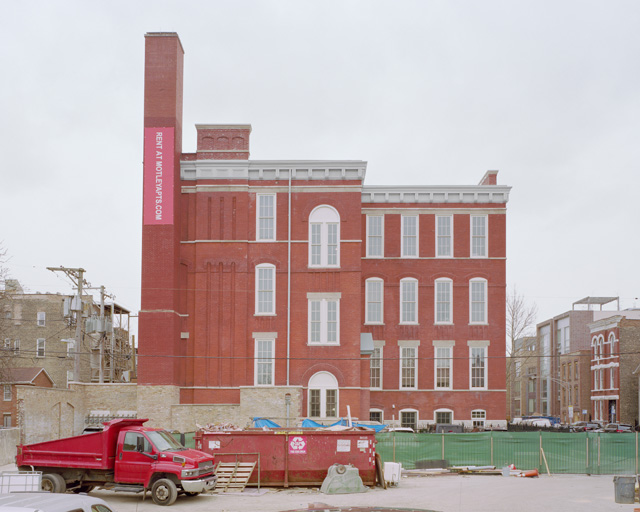The (Mis)Education of Chicago centers on the closures of over 40 schools, which disproportionately affected Black and Brown communities across Chicago’s North, South, and West sides. While city officials cited underperformance and underutilization as reasons for the closures, Pope’s work highlights the deeper realities: the abrupt dismantling of vital educational structures left families in underserved neighborhoods to cross gang lines or travel long distances to attend new schools. Some schools were repurposed as community centers or union halls, while others were transformed into high-end lofts. The majority, however, remain boarded up and abandoned, leaving a profound void in the fabric of these neighborhoods.
In his images, Pope explores a critical truth: communities of color are not responsible for the socio-economic systems they inhabit; they are forced to survive within them. His large-format photographs capture the physical and emotional abandonment felt in these areas, focusing on the facades of the now-empty schools, as well as portraits of the individuals and families directly affected by their closure. By pairing images of the schools with portraits of former students, staff, and nearby residents, Pope documents the long-term consequences of systemic racial inequality and failed political policy.
Austin Pope, an African American and United States Veteran, reflects on the interplay of systemic hierarchies, oppression, and acts of survival in his work. His exhibition calls attention to how political decisions act as precursors to social disparity, especially within communities of color, where the dismantling of public institutions furthers the cycle of disenfranchisement. As Pope poses through his art: what does it mean for a community to have its institutional structures abandoned, and how do we tell the stories of those impacted?
If you’d like to have your portrait taken for this project, please scan the QR code
below and fill out the questionnaire.
below and fill out the questionnaire.


